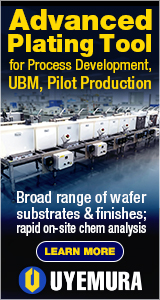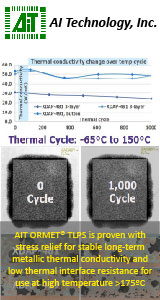|

|
|
| Ask the Experts | |||||||
|
|||||||
|
January 22, 2007 - Updated July 4, 2007 - Originally Posted Small component rework to IPC spec.This question is on the "low tech" end of the spectrum compared to most that I have seen here. We have always prided ourselves on our excellent quality and it has become one of our major selling points. Recently it was pointed out to us that we are not using the approved IPC method for small component replacement/rework. When doing replacement our associates typically use (and prefer) two soldering irons, one on each side of the component to remove and replace the part. The IPC manual says to use hot tweezers for this task. Is there an inherent problem using the 2 irons vs. the tweezers that could end up affecting our quality? R.W. |
|||||||
| Expert Panel Responses | |||||||
|
There is no inherent problem in using 2 soldering irons to remove chip components. Soldering tweezers are simply two irons in one assembly making easier to manipulate when removing the components. If the operator has the dexterity and the correct size solder iron tips, there is no reason the quality should be any different one way or the other.
Vice President, Technical Director EPTAC Corporation At EPTAC Corporation, Mr. Lambert oversees content of course offerings, IPC Certification programs and provides customers with expert consultation in electronics manufacturing, including RoHS/WEEE and lead free issues. Leo is also the IPC General Chairman for the Assembly/Joining Process Committee.
Irons are easier than tweezers? This is contradictory to my experience, but the end results should be about the same. Note, it is important to not use either method when reworking ceramic chip capacitors. Hot air is the preferred method in this situation.
CEO & Managing Partner DfR Solutions Dr. Hillman's specialties include best practices in Design for Reliability, strategies for transitioning to Pb-free, supplier qualification, passive component technology and printed board failure mechanisms.
This is a common solution for removal of two sided devices in the rework area. Some of the common reasons operators use this method are; ease of getting the second iron, thermal capacity of two irons and the unavailability of a tweezers hand piece. But when you introduce two separate irons into the mix you also add additional variables to the solder joint that can affect quality. Both irons have to be calibrated, both have to be the same temperature and both soldering tips must be the same size and shape. Any inconsistencies with any of these points can create a damaging thermal delta across the component possibly causing latent damage. The use of a thermal tweezers eliminates these variables and also increases throughput in the rework area, and it makes it easier on the operator. Finally conductive heating tools must only be used to replace components where solder paste is not used and with components that are rated for the rapid thermal ramp that occurs with soldering irons.
Regional Sales Manager OK International Inc. Ed Zamborsky is a Regional Sales & Technical Support Manager for Thermaltronics, located in New York. His position requires frequent customer visits throughout North America and the Caribbean and his position encompasses not only sales but the role of trainer and master applications engineer for all of Thermaltronics products. His expertise includes such specialties as hand soldering, convection and conduction reflow techniques, array rework, fluid dispensing equipment, and fume extraction. Ed has authored many articles and has presented many papers on topics such as; Low Volume SMT Assembly, Solder Fume Extraction, SMT Rework, BGA Rework, Lead-Free Hand Soldering, High Thermal Demand Hand Soldering, Lead Free Visual Inspection and Lead Free Array Rework.
As the saying goes, "there is more than one way to skin a cat." In our rework service department we have many Operators with superior skills that utilize that same technique when reworking chip cap components. We also utilize hot tweezers, hot air pencils and other tools as well. I'm not aware of a spec that would not allow the technique unless it is customer specific. I can understand your customers hesitation and concern but with a skilled rework Operator the technique can be just as effective as the other approaches.
Sales Engineer Circuit Technology Center Mr. Price has been a key member of the team at Circuit Technology Center since 1985. He has vast expertise, experience and understanding of complex circuit board rework, repair and modification operations. He is one of the most knowledgeable experts in this area across the globe.
|
|||||||
| Submit A Comment | |||||||
|
Comments are reviewed prior to posting. You must include your full name to have your comments posted. We will not post your email address. |
|
Free Newsletter Subscription
Circuitnet is built for professionals who bear the responsibility of looking ahead, imagining the future, and preparing for it. Insert Your Email Address |
|

|






